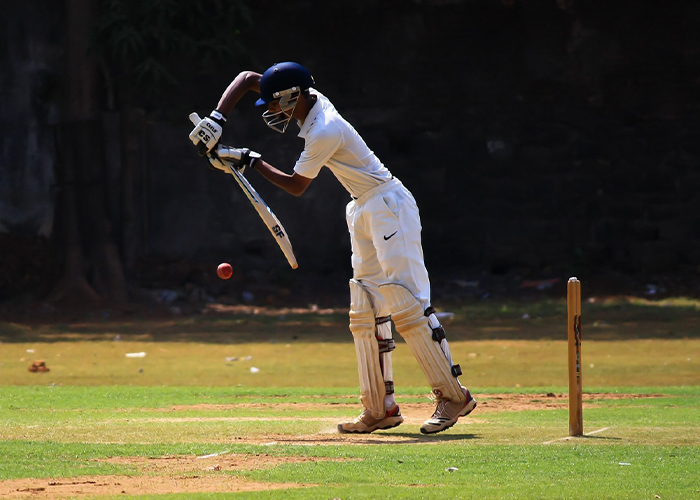50% of Indians will get this Disease! | The Next Pandemic : Understanding and Preventing Nearsightedness
Indians will get this Disease: Learn about the rising concern of myopia in India and how it affects both children and adults. Discover the causes, prevention strategies, and the importance of regular eye exams in combating this vision condition. Take proactive steps today to safeguard your vision for the future!
Indians will get this Disease
Introduction: Indians will get this Disease
Do you remember the age-old advice from our parents warning us not to watch too much TV, or we'll end up needing glasses? Well, it turns out there might be some truth to it. Today, millions of children are wearing glasses, and nearsightedness, also known as myopia, is on the rise. In this article, we'll delve into what myopia is, what causes it, and most importantly, how we can prevent it in the next generation.
What is Myopia?
Myopia is a common vision condition where distant objects appear blurry while close objects remain clear. It occurs when the eyeball is too long or the cornea is too curved, causing light to focus in front of the retina instead of on it.
Causes of Myopia: Indians will get this Disease
There are several factors that contribute to the development of myopia:
1. Genetics: If your parents or siblings have myopia, you are more likely to develop it as well. Genetics play a significant role in determining one's susceptibility to myopia.
2. Near Work: Spending prolonged periods engaged in near work activities such as reading, writing, or using electronic devices can strain the eyes and increase the risk of myopia.
3. Outdoor Time: Recent studies suggest that spending less time outdoors may be linked to a higher risk of myopia. Children who spend more time outside have shown to have a reduced likelihood of developing myopia.
Prevention Strategies: Indians will get this Disease
While there is no guaranteed way to prevent myopia, there are steps we can take to reduce its occurrence:
1. Take Regular Breaks:
Encourage children to take regular breaks from close work. Every 20-30 minutes, advise them to look at something in the distance for about 20 seconds to relieve eye strain.
2. Promote Outdoor Activities:
Encourage outdoor activities and ensure children spend at least two hours a day in natural light. Outdoor time has been associated with a lower risk of myopia development.
3. Regular Eye Exams:
Schedule regular eye check-ups, especially for children. Early detection of myopia allows for timely intervention and management.
Conclusion: Indians will get this Disease
In conclusion, myopia is a prevalent condition affecting individuals worldwide, and its incidence is on the rise. While we may not be able to eradicate myopia entirely, we can certainly take steps to mitigate its impact. By promoting outdoor activities, encouraging regular breaks from near work, and prioritizing routine eye check-ups, we can work towards a future where fewer individuals are affected by this vision condition. Let's take proactive measures today to safeguard the vision of tomorrow's generation.
Remember, your eyesight is precious, so take care of it!
Frequently Asked Questions (FAQs): Indians will get this Disease
1. What is myopia, and how does it affect people?
Myopia, also known as nearsightedness, is a common vision condition where distant objects appear blurry while close objects remain clear. It occurs when the eyeball is too long or the cornea is too curved, causing light to focus in front of the retina instead of on it. Myopia can affect people of all ages, from children to adults.
2. What are the main causes of myopia?
Myopia can be caused by various factors, including genetics, excessive near work (such as reading or using electronic devices), and a lack of outdoor time. If parents or siblings have myopia, there is a higher likelihood of developing it. Spending too much time doing close work and not enough time outdoors can also increase the risk of myopia.
3. How can myopia be prevented?
While there is no guaranteed way to prevent myopia, certain measures can help reduce the risk or progression of the condition. These include taking regular breaks from near work, spending more time outdoors, and getting regular eye exams. Taking these proactive steps can help maintain good eye health and reduce the risk of myopia development.
4. Is there a cure for myopia?
Currently, there is no permanent cure for myopia. However, myopia can be managed effectively with prescription eyeglasses, contact lenses, or refractive surgery. These treatments help correct vision and alleviate the symptoms of myopia, enabling individuals to see clearly at various distances.
5. How often should I get my eyes checked for myopia?
It is recommended to undergo regular eye exams, especially for children and individuals with a family history of myopia. Eye exams can help detect myopia early and allow for timely intervention and treatment. Adults should typically have their eyes checked every one to two years, while children may need more frequent examinations, depending on their age and risk factors.
Remember, maintaining good eye health and seeking timely care from an eye care professional are essential for managing myopia and preserving clear vision. If you have any concerns about your vision or eye health, consult an optometrist or ophthalmologist for personalized advice and guidance.
Written By: Muktar

























